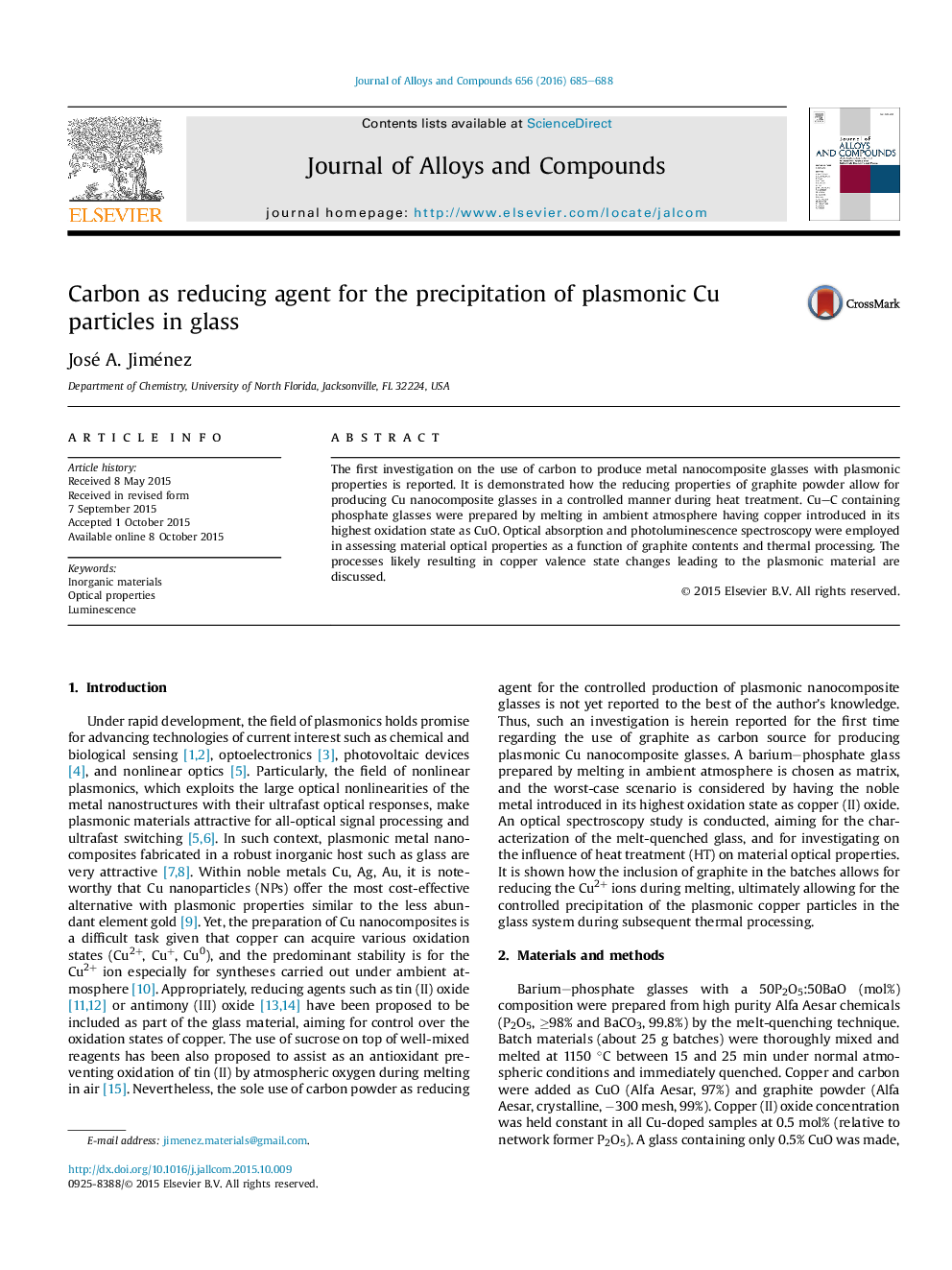| Article ID | Journal | Published Year | Pages | File Type |
|---|---|---|---|---|
| 1607722 | Journal of Alloys and Compounds | 2016 | 4 Pages |
•Carbon proposed as reducing agent for fabricating glasses with plasmonic properties.•Worst-case scenario considered by using graphite along with copper (II) as starting material.•Chemical reduction processes occurring during melting and heat treatment evaluated by optical spectroscopy methods.•Control over plasmon resonance development of Cu nanoparticles attained during thermal processing.
The first investigation on the use of carbon to produce metal nanocomposite glasses with plasmonic properties is reported. It is demonstrated how the reducing properties of graphite powder allow for producing Cu nanocomposite glasses in a controlled manner during heat treatment. Cu–C containing phosphate glasses were prepared by melting in ambient atmosphere having copper introduced in its highest oxidation state as CuO. Optical absorption and photoluminescence spectroscopy were employed in assessing material optical properties as a function of graphite contents and thermal processing. The processes likely resulting in copper valence state changes leading to the plasmonic material are discussed.
Graphical abstractFigure optionsDownload full-size imageDownload as PowerPoint slide
